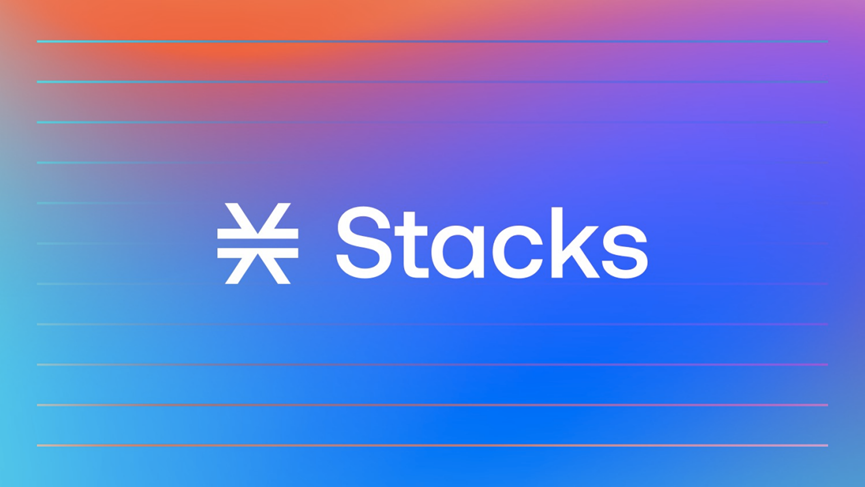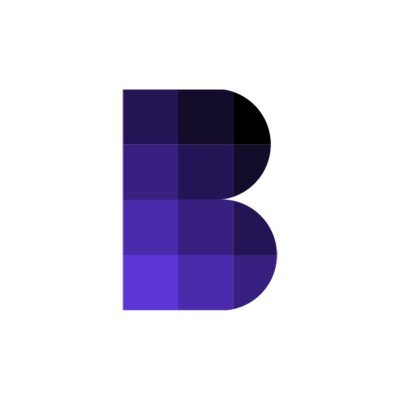With the explosive popularity of the Bitcoin NFT protocol Ordinals, the entire Bitcoin NFT market has entered a new round of competition. As one of the first blockchains capable of producing Bitcoin ordinals, Stacks has benefited greatly from this. In the past ten days, its token STX has doubled in price. Although the recent market has started a downward trend and the STX price has fallen to $0.69, it is still a popular currency and favored by many investors. However, the popularity of Ordinals has also raised a question. As more and more Bitcoin NFT projects emerge, the Bitcoin network may become congested, which will test Bitcoin's minimalist ideology. For Stacks, as a Bitcoin L2 public chain, this is both a challenge and a rare opportunity.
Bitcoin Star Public Chain Stacks is Born to Breakthrough
There has always been a technical problem in blockchain called the "impossible triangle", which means that only two out of three aspects, decentralization, security, and scalability, can be satisfied. As one of the earliest public chains, Bitcoin also follows this principle. Bitcoin performs the best in decentralization and security, but has made significant compromises in scalability, resulting in poor scalability. It takes 10 minutes to write a new block, and transaction confirmation time can be as high as several tens of minutes. Because of these limitations, although Bitcoin has developed for more than a decade, it still exists as a pure value public chain.
In addition to technical aspects, social divisions are also one of the reasons affecting Bitcoin's expansion. Bitcoin purists believe that Bitcoin, as a value public chain, is already good enough and does not need to be expanded to improve transaction speed. They believe that expanding may change Bitcoin's consensus mechanism, leading to a hard fork and affecting Bitcoin's security and decentralization properties. In addition, deploying various complex smart contracts and applications on the Bitcoin network will also cause congestion and increase gas fees, which deviates from Satoshi Nakamoto's vision of Bitcoin as a peer-to-peer (P2P) cash system. Therefore, they oppose Bitcoin expansion and advocate maintaining the simplicity and stability of the Bitcoin network.
Technical challenges and community divisions have made the process of Bitcoin expansion slow and tortuous. Before the emergence of Stacks, many projects tried to improve Bitcoin's scalability, but most of them disappeared, and only a few forked projects briefly became popular due to hype. In comparison, Stacks is undoubtedly the most successful.
The success of Stacks is mainly due to finding a balance between Bitcoin purists and expansionists.
The native Bitcoin network itself does not support smart contracts and decentralized applications, so a second-layer protocol is needed to achieve these functions. Stacks is such a protocol that deploys smart contracts and decentralized applications on the Bitcoin network by building a new blockchain. The Stacks blockchain interacts with the Bitcoin network, using Bitcoin's security and network effects to ensure its security and decentralization, while not making any modifications to the Bitcoin network, maintaining the simplicity and stability of the Bitcoin network.
Innovation and Advantages of Stacks Technology
Recently, due to the popularity of Ordinals, the public has focused on the issue of Bitcoin's scalability that was previously overlooked, and they were surprised to discover the existence of Stacks. While people tend to think of Stacks as a short-term trend, they do not realize that Stacks has been quietly working on building the Bitcoin Layer 2 network for nearly 10 years.
Stacks is an independent blockchain based on the Bitcoin blockchain, created by Muneeb Ali and Ryan Shea in 2013. It adopts the "Proof of Transfer" (PoX) protocol and utilizes the security of Bitcoin and Stacks token (STX) to implement smart contracts. Early on, Stacks focused on DApps development and providing decentralized experiences with the security of Bitcoin. As congestion and high fees plagued Bitcoin, Stacks began researching and deploying second-layer technologies like Lightning Network to process high throughput, low cost, and instant settlement transactions under Stacks 2.0.
Stacks has many technological advantages, which are reflected in the following aspects:
(1) PoX Mining Mechanism: Stacks uses the PoX mining mechanism instead of the traditional PoW or PoS mining mechanism, which solves many problems in traditional mining mechanisms such as energy consumption and computing power competition.
(2) Clarity Smart Contract Language: Stacks has developed a smart contract language called Clarity, which has a strong type system and clear execution logic. It can execute secure smart contracts without intermediaries, thereby improving the reliability and operability of smart contracts.
(3) Decentralized Identity Verification: Stacks provides a decentralized identity verification system called Blockstack, which uses blockchain technology and public key infrastructure to verify and manage user identities, improving user privacy and security.
(4) Integration with Bitcoin: Stacks is integrated with Bitcoin, and can extend Bitcoin's security, reliability, and market participation to the Stacks ecosystem, achieving higher decentralization and security.
(5) Compatibility with Existing Web Technologies: Stacks can be compatible with existing web technologies, such as developing decentralized applications using JavaScript, making it easier for developers to build decentralized applications. In general, the technological innovation and advantages of Stacks allow it to achieve higher decentralization, security, and reliability with better scalability and sustainability, providing strong support for the growth of its ecosystem.
Bitcoin NFT Rise: Stacks' Opportunities and Challenges
The emergence of Ordinals has sparked another round of hype in the Bitcoin application field. As a representative L2 project of Bitcoin, Stacks is in an excellent position to benefit from market speculation. According to Defi Llama's data, the funds on Stacks increased by 254% in the last 30 days (February 1 to March 2) and TVL increased from $7.56 million to $26.8 million. Stacks' native token STX has doubled in the past two weeks. Although STX's price has experienced a correction in the last few days due to a market downturn, investors generally remain optimistic about the future of STX.
Investors' optimism about STX is mainly based on the expected 2024 Bitcoin halving market. As the token of the Bitcoin second-layer scaling protocol, the value of STX is closely related to Bitcoin. Therefore, although STX seems to have exhausted the growth trend based on the Ordinals news, it is still considered a cryptocurrency worth long-term investment due to Bitcoin's future half-life market and Stacks' good development trend.
The Ordinals-driven Bitcoin NFT craze is getting bigger and it may become the summer of Bitcoin NFT this year. This is an excellent development opportunity for Bitcoin scaling protocols such as Stacks. Especially Stacks, it is not only highly integrated with the Bitcoin ecosystem technically, but its economic model is also more sustainable and decentralized, making it more development space than other public chains.
In addition to the positive side, the explosion of Ordinals also raises a previous issue: if NFT causes network congestion, Bitcoin's minimalist ideological doctrine will face a test. Will the Bitcoin community allow this speculative activity or block the long-term development of the network?
Currently, the opposition's view is centered on the damage NFT has caused to Bitcoin's original use case. Some community members stated, "Allowing Bitcoin to be used for NFTs is a bit like allowing hospitals to host rave parties." Supporters believe that the rise of Bitcoin NFTs has found new application scenarios beyond traditional value storage, providing Bitcoin with more gameplay and financial use cases. From a data perspective, both perspectives can be verified. According to OKLink's data, Ordinals' "inscription" is consuming 50% of Bitcoin block space, and block space utilization has reached 100%. On the other hand, from the perspective of the mining community, the emergence of Bitcoin NFTs has also brought them new revenue growth paths. In the past week, the fees accumulated by writing "inscriptions" using the Ordinals protocol have reached $880,000. Currently, neither party can convince each other. This seems to have returned to the debate between Bitcoin purists and expansionists that Stacks initially faced. Last time, Stacks found a balance point between the two parties. This time, can a balance point acceptable to both parties be found for the debate sparked by Bitcoin NFTs? This is a severe challenge for Stacks and other Bitcoin's L2 networks.
Stacks Popular Ecosystem Projects Review
With the rise of the Bitcoin NFT craze, more and more investors are bullish on Stacks. As an important part of the Bitcoin ecosystem, Stacks provides users with more secure, efficient, and sustainable smart contract services and has the potential for collaborative innovation with other cryptocurrency projects and traditional financial markets. Given Bitcoin's large user base, Stacks' close integration with the Bitcoin ecosystem, more sustainable and decentralized economic model, better privacy protection, and higher performance make it have greater development space than other public chains. Projects worth paying attention to in the current Stacks ecosystem include:
Alex
Recently, Bitcoin has undergone cultural and technological transformation through Ordinals and Stacks. On Stacks, a project that is expected to emerge in the future is ALEX. ALEX is a DEX designed for Bitcoin and the first platform to provide one-stop DeFi services on Bitcoin through Stacks.
The core functions of the ALEX protocol include decentralized trading and decentralized lending. Users can trade on a decentralized exchange and obtain liquidity from liquidity providers. With collateral-based lending, users can collateralize digital assets to obtain stablecoins for fund management without the need to sell assets. ALEX also issues governance tokens ALEX, and users holding ALEX tokens can participate in the protocol's governance process, including proposal submission, voting, and decision-making. Through liquidity mining mechanism, ALEX Labs incentivizes users to provide liquidity and participate in the protocol's ecosystem, earning ALEX tokens as rewards.
Gamma
Gamma is an NFT marketplace in the Stacks ecosystem, formerly known as STXNFT. The market aims to be the center of Web3, attracting collectors, creators, and investors to explore, trade, and showcase NFTs through the Bitcoin ecosystem.
Recently, with the rise of BTC NFT (Ordinals technology), NFT activities on Stacks are also gradually increasing. According to DappRadar data, Gamma's trading volume has grown by more than 300% in the past 30 days, thanks to low-cost and fast NFT minting speed provided by the Stacks ecosystem.Gamma is a premier NFT marketplace where users can explore dozens of different collections that are becoming increasingly popular. In addition, the Gamma platform provides a professional, creator-first NFT Launchpad for digital artists to find an easy way to deploy low-code smart contract functionality. Using Gamma, even inexperienced artists can create smart contract functionality for their NFTs in minutes, ensuring ownership of their NFTs and protecting their work, like copyright. In addition, Gamma also serves as a social platform for creators to gather, collaborate and share ideas. Gamma already has many popular NFT collections, which have built up a fanatical following in the Web3 world. In fact, many collections are already in high demand, and some projects even offer secondary collections to lower the barrier to entry to their community.
Arkadiko
Arkadiko is a DeFi platform built on the Stacks ecosystem, aimed at providing users with various financial products and services, including borrowing, trading, collateralizing, earning rewards, and more. Unlike other DeFi platforms, Arkadiko is built on the Stacks ecosystem and uses Stacks' unique technology architecture, which means it can provide decentralized financial services on the Bitcoin blockchain.
The primary application of the Arkadiko platform is a collateralized asset minting platform for the USDA stablecoin, similar to the MakerDAO model. Users deposit STX into Arkadiko's Vault and mint the soft-pegged USD stablecoin, USDA, through over-collateralization. The deposited STX can also earn rewards through the Stacks PoX mechanism. In addition, users can also use STX tokens as tools for trading and paying fees, and obtain loans by collateralizing STX tokens. Arkadiko's lending rates are low and very attractive to users. Furthermore, Arkadiko also offers liquidity pools, stablecoin trading, and yield farming functions, allowing users to participate in more DeFi products and services. The Arkadiko development team is committed to providing more innovative DeFi products and services to provide a better financial experience for users.
CityCoins
CityCoins is a cryptocurrency designed to provide financial support to cities, promoting the development of urban economies. The project was co-founded by Muneeb Ali and Ryan Shea in 2021 and is supported by the Stacks ecosystem.
The main function of CityCoins is to provide financing for cities and help them achieve sustainable development. Holders of CityCoins can choose to invest them in a specific city's fund, providing financial support to that city. These funds can be used for various projects in the city, such as infrastructure construction, public services, and community development. Holders of CityCoins can earn returns from the fund and receive discounts on CityCoins. In addition, CityCoins can also be used to purchase goods and services specific to a particular city. For example, tourists can use CityCoins to purchase restaurant, hotel, and tourist attraction tickets, as well as other city goods and services. Overall, CityCoins aims to provide more economic support to cities while also providing economic returns to holders. This innovative cryptocurrency model provides a new financing mechanism for sustainable urban development and an interesting investment option for holders.
Summary
With the rise of Ordinals, the Bitcoin NFT market is rapidly developing. This is both an important opportunity and a daunting challenge for Stacks. In order to meet the high throughput demands of Bitcoin NFT projects, Stacks needs to further leverage its technical advantages in Bitcoin Layer 2 scaling solutions and launch more scalable network solutions. At the same time, Stacks also needs to strengthen its integration with the Bitcoin network to ensure its security while not affecting the stability of the Bitcoin network. If Stacks can successfully overcome these challenges, it will become one of the most successful scaling solutions in the Bitcoin field, laying the foundation for the future development of the Bitcoin network.















